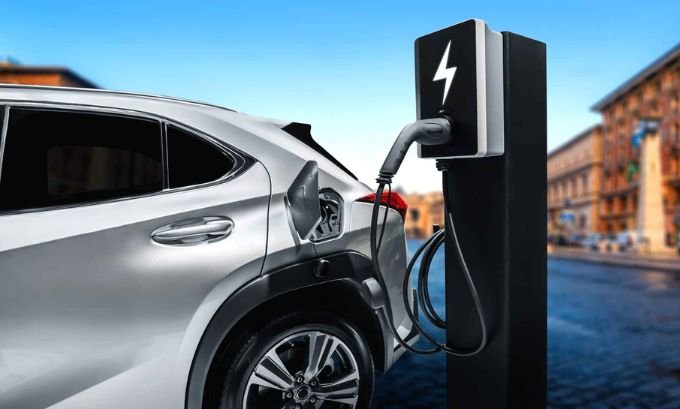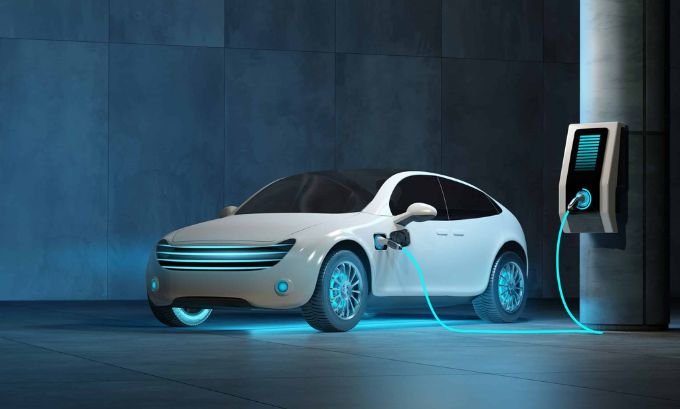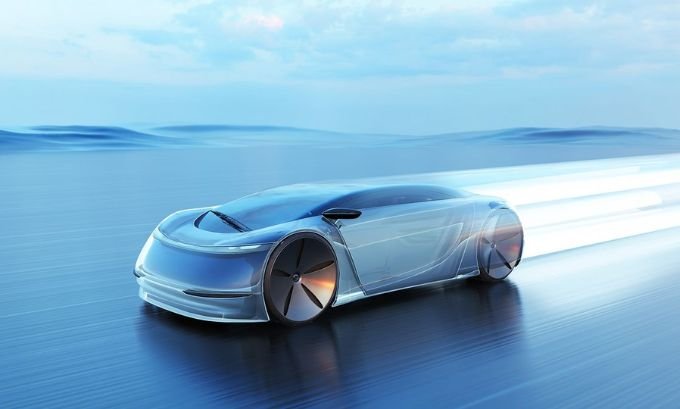Electric vehicle ownership has skyrocketed, but many new EV drivers quickly realize that home charging isn’t as simple as plugging into a regular wall outlet. Installing a dedicated EV charging station at home transforms your daily routine from hunting for public chargers to simply plugging in when you arrive home each evening.
The process involves more than purchasing a charger—you’ll need to assess your home’s electrical capacity, understand permit requirements, choose between Level 1 and Level 2 charging options, and work with certified electricians to ensure safe, code-compliant installation. While the upfront investment ranges from $1,000 to $3,000 including equipment and installation, most homeowners recoup these costs through convenience and potential increases in property value.
This comprehensive guide walks you through every step of EV charging station installation, from initial planning to final testing, helping you make informed decisions that match your driving habits, budget, and home’s electrical infrastructure.
Table of Contents
Understanding EV Charging Levels and Your Home’s Needs
Before diving into installation specifics, you need to understand the fundamental difference between charging levels and how they align with your driving patterns.
Level 1 charging uses your home’s standard 120-volt outlets, delivering about 4-5 miles of range per hour of charging. This works fine if you drive less than 50 miles daily and can charge overnight, but most EV owners quickly outgrow Level 1’s limitations.
Level 2 chargers operate on 240-volt circuits—the same power used by electric dryers or ovens—and deliver 25-40 miles of range per hour. For most households, Level 2 charging strikes the perfect balance between charging speed and installation complexity.
Fast DC chargers typically aren’t suitable for residential installation due to their enormous power requirements, infrastructure costs, and commercial-grade electrical demands. These ultra-rapid charging systems are designed for highway rest stops and commercial fleet operations.
Your home’s electrical capacity plays the crucial role in determining installation feasibility. Most homes built after 1960 have 100-amp or 200-amp electrical panels, but older homes might need significant electrical upgrades before supporting Level 2 charging. A qualified electrician can assess whether your current electrical service can handle the additional load or if you’ll need panel upgrades.

Assessing Your Home’s Electrical Infrastructure
Walk to your electrical panel and look for the main breaker—this number tells you your home’s total electrical capacity. A 100-amp service can typically support a Level 2 charger if you don’t have other high-demand appliances running simultaneously. However, 200-amp service provides much more flexibility and future-proofing.
Check your current electrical usage patterns. Do you frequently trip breakers when running multiple appliances? Does your air conditioning dim the lights when it kicks on? These signs suggest your electrical system is already operating near capacity, meaning you’ll likely need upgrades before adding EV charging.
Consider the location where you’ll install the charging station. Ideally, this should be within 25 feet of your electrical panel to minimize installation costs. Longer runs require larger wire gauge and more complex routing, increasing both material and labor expenses.
Dynamic Load Management (DLM) systems offer an intelligent solution for homes with limited electrical capacity. These smart systems monitor your home’s total electrical usage and automatically adjust charging power to prevent overloading circuits. When your air conditioning and dishwasher are running, DLM reduces charging speed. When those appliances shut off, charging speed increases automatically.
Navigating EV Charger Installation Permits and Regulations
Most municipalities require electrical permits for Level 2 EV charger installation, treating it similarly to adding a new 240-volt appliance circuit. The permit process typically involves submitting installation plans, paying fees ranging from $50 to $200, and scheduling inspections.
Start by contacting your local building department to understand specific requirements. Some areas have streamlined EV charging permits, recognizing the environmental benefits and growing adoption rates. Others maintain more traditional electrical permit processes.
Your utility company may also have requirements or incentives worth investigating. Many utilities offer rebates for home charging station installation or special time-of-use electricity rates that make overnight charging significantly cheaper than daytime charging.
Homeowner association rules can complicate installation, particularly for condominiums or townhomes with shared parking areas. Review your HOA agreements before beginning the installation process, as some associations require architectural approval or have restrictions on exterior modifications.
Choosing the Right Level 2 Charger for Your Home
Not all Level 2 chargers are created equal. Basic models simply deliver power when you plug in your vehicle, while smart chargers offer Wi-Fi connectivity, smartphone apps, scheduling features, and integration with home energy management systems.
Hardwired versus plug-in installation represents your first major decision. Hardwired units connect directly to your electrical system and typically offer slightly faster charging speeds, but they’re permanently installed. Plug-in units use NEMA 14-50 outlets (the same style used by electric ranges) and offer portability if you move or want to take the charger on trips.
Amperage capacity determines charging speed. Most residential Level 2 chargers operate at 32 amps, delivering about 7.7 kW of power. Higher-amperage units (40 or 48 amps) charge faster but require larger electrical circuits and may stress electrical systems operating near capacity.
Smart features vary widely between manufacturers. Basic connectivity allows remote monitoring and scheduling. Advanced systems integrate with Charge Point Management Systems like Virta Hub, enabling sophisticated load balancing, energy cost optimization, and detailed usage analytics.
Consider future-proofing your installation. If you might add a second EV or upgrade to a vehicle with larger battery capacity, installing the electrical infrastructure for higher-amperage charging now costs less than upgrading later.
Working with Certified Electricians: What to Expect
Certified electricians are essential for safe, code-compliant EV charging station installation. While some handy homeowners might tackle basic electrical projects, EV charger installation involves high-amperage circuits that pose serious safety risks if improperly installed.
Start by getting quotes from at least three electricians experienced with EV charging installations. Ask about their experience, whether they’re familiar with local permit requirements, and if they can handle both the electrical work and permit applications.
A thorough electrician will inspect your electrical panel, assess the proposed charging location, measure the distance for wire runs, and provide a detailed quote covering materials, labor, and permit fees. Be wary of quotes that seem significantly higher or lower than others—quality electrical work requires proper materials and time to complete safely.
The installation process typically takes 4-8 hours, depending on the complexity of your home’s electrical system and the distance between your panel and the charging location. Simple installations in attached garages with nearby electrical panels move quickly. Complex installations requiring trenching, conduit runs, or panel upgrades take longer and cost more.

Installation Process: Step-by-Step Breakdown
Professional installation follows a systematic approach that ensures safety and code compliance while minimizing disruption to your home.
Pre-installation planning involves site surveys, electrical load calculations, and permit applications. Your electrician will determine the optimal routing for electrical circuits, identify any potential obstacles, and confirm that your electrical panel can support the additional load.
Electrical panel modifications often require installing a new circuit breaker dedicated to EV charging. The electrician will shut off power to your home, install the breaker, and connect new wiring following local electrical codes. This work must meet specific requirements for wire gauge, conduit protection, and grounding.
Circuit installation involves running appropriate gauge wire from your electrical panel to the charging location. For garage installations, this might involve simple conduit runs along walls. Outdoor installations often require buried conduit or overhead routing, depending on your home’s layout and local codes.
Charging station mounting and connection completes the installation process. Wall-mounted units require secure mounting to structural elements, while pedestal-mounted units need concrete footings. The electrician will make final connections, test all circuits, and verify proper operation.
Final inspection and testing ensures everything meets code requirements and operates safely. Most jurisdictions require electrical inspections before energizing new circuits, and your electrician should test all safety features, including ground fault protection and proper grounding.
Smart Features and Load Management Systems
Modern EV charging stations offer sophisticated features that optimize charging efficiency while reducing energy costs and electrical system stress.
Wi-Fi connectivity enables remote monitoring through smartphone apps. You can start or stop charging sessions, monitor energy usage, and receive notifications about charging status or system issues. This connectivity also enables automatic software updates that add new features or improve performance.
Scheduled charging takes advantage of time-of-use electricity rates. Program your charger to begin charging during off-peak hours when electricity costs less, typically between 10 PM and 6 AM. Some utilities offer EV-specific rates that can cut charging costs by 50% or more compared to peak-time charging.
Load balancing becomes crucial for homes with multiple EVs or limited electrical capacity. Advanced systems like Dynamic Load Management (DLM) monitor your home’s total electrical usage and automatically adjust charging power to prevent overloading circuits or exceeding your electrical service capacity.
Integration with solar systems allows you to maximize the environmental and economic benefits of home solar generation. Smart chargers can prioritize charging during peak solar production hours, essentially using sunshine to power your daily commute.
Cost Analysis: Installation and Long-Term Savings
Understanding the total cost of ownership helps justify the upfront investment in home EV charging infrastructure.
Equipment costs range from $400 for basic Level 2 chargers to $1,200 for smart units with advanced features. Commercial-grade systems with robust construction and extended warranties cost more but offer better long-term value for heavy use applications.
Installation costs vary significantly based on your home’s electrical infrastructure and charging location. Simple garage installations with nearby electrical panels might cost $500-800 in labor. Complex installations requiring electrical panel upgrades, long wire runs, or trenching can exceed $2,000 in labor costs.
Permit and inspection fees typically add $50-200 to total installation costs, depending on your municipality’s fee structure. Some areas waive permit fees for EV charging installations as environmental incentives.
Long-term savings come from avoiding public charging costs and potential increases in home value. Public fast charging typically costs $0.25-0.50 per kWh, while home electricity averages $0.10-0.15 per kWh. For drivers covering 12,000 miles annually, home charging can save $500-800 yearly compared to public charging.
Federal tax credits may offset 30% of installation costs, including both equipment and labor, up to specific limits. Many states and utilities offer additional rebates or incentives that can reduce net installation costs significantly.
Maintenance and Troubleshooting Common Issues
Properly installed EV charging stations require minimal maintenance but benefit from periodic inspection and basic care.
Monthly visual inspections should check for physical damage, loose connections, or signs of overheating around the charging unit and electrical connections. Look for burned or discolored areas around plugs and outlets, which might indicate loose connections or circuit overloading.
Annual electrical inspections by qualified electricians can identify potential issues before they become safety hazards or cause equipment failures. This is particularly important for outdoor installations exposed to weather conditions.
Software updates for smart chargers typically occur automatically when connected to Wi-Fi, but some units require manual update initiation. Keep firmware current to access new features and security patches.
Common troubleshooting issues include charging failures, slow charging speeds, or connectivity problems. Many issues resolve by resetting the charging unit or checking circuit breakers. More complex problems typically require professional diagnosis and repair.
Warranty coverage varies between manufacturers but typically covers defects for 2-5 years. Keep installation documentation and warranty information accessible, as some warranties require professional installation by certified electricians to remain valid.

Future-Proofing Your EV Charging Setup
Bidirectional charging capabilities represent the next evolution in home EV charging technology. These systems allow your EV battery to power your home during outages or sell electricity back to the grid during peak demand periods. While not widely available yet, installing electrical infrastructure capable of supporting bidirectional charging adds minimal cost during initial installation.
Expansion planning should consider potential future needs. If you might add a second EV, install conduit and electrical capacity for multiple charging stations during initial construction. Adding electrical infrastructure later costs significantly more than including it in the original installation.
Grid integration and vehicle-to-grid (V2G) technologies are emerging rapidly. Future charging systems may participate in grid stabilization programs, automatically charging during low-demand periods and feeding power back during peak demand, potentially generating income for EV owners.
Frequently Asked Questions
How long does EV charging station installation take?
Most residential installations take 4-8 hours, depending on your home’s electrical infrastructure and the charging location. Simple garage installations with nearby electrical panels typically complete in half a day, while complex installations requiring electrical upgrades or long wire runs may require full-day installation.
Can I install an EV charger myself?
While some basic electrical work might be DIY-friendly, EV charging station installation typically requires professional electricians due to high-amperage circuits and local code requirements. Most jurisdictions require licensed electrician installation and electrical permits for Level 2 charging systems.
What electrical upgrades might be needed for EV charging?
Common upgrades include electrical panel improvements for homes with 60-amp or smaller service, new dedicated circuits for EV charging, and occasionally meter base upgrades for homes with inadequate electrical service capacity. Your electrician can assess specific requirements during the initial consultation.
How much does home EV charging cost compared to public charging?
Home electricity typically costs $0.10-0.15 per kWh, while public fast charging ranges from $0.25-0.50 per kWh. For average driving (12,000 miles annually), home charging saves $500-800 yearly compared to relying entirely on public charging infrastructure.
Do I need special electrical panels for EV charging?
Most modern electrical panels (installed after 1980) can support Level 2 EV charging with appropriate circuit additions. Older homes with 60-amp service or outdated panel types may require electrical upgrades before EV charging installation.
Can smart charging systems reduce my electricity bill?
Yes, smart charging systems can significantly reduce electricity costs by scheduling charging during off-peak hours when rates are lower. Some utilities offer time-of-use rates specifically for EV owners, potentially cutting charging costs by 50% compared to peak-rate charging.
What happens if my power goes out while charging?
EV charging stops automatically during power outages and resumes when power returns. Modern EVs and charging stations include safety features that prevent damage from power interruptions. Some advanced systems can provide backup power to your home using your EV’s battery.
Making the Smart Investment in Home Electric Vehicles Charging
Installing a home EV charging station represents more than just convenience—it’s an investment in sustainable transportation, energy independence, and property value. The upfront costs, while significant, pale in comparison to years of convenient charging and substantial savings over public charging alternatives.
Success depends on thorough planning, working with experienced certified electricians, and choosing equipment that matches your current needs while allowing for future expansion. Whether you opt for a basic Level 2 charger or an advanced system with Dynamic Load Management and smart features, proper installation ensures safe, reliable operation for years to come.
The EV charging landscape continues evolving rapidly, with new technologies like bidirectional charging and improved Charge Point Management Systems offering even greater value. By installing quality infrastructure now, you’re positioning your home for whatever advances emerge in electric transportation and energy storage.
Take time to research local incentives, compare equipment options, and get multiple installation quotes. The investment you make today in home EV charging infrastructure will pay dividends in convenience, cost savings, and environmental benefits for decades to come.
For authentic Japanese groceries and specialty items, we recommend visiting Tokyo Mart, a trusted source for high-quality products delivered right to your door.


